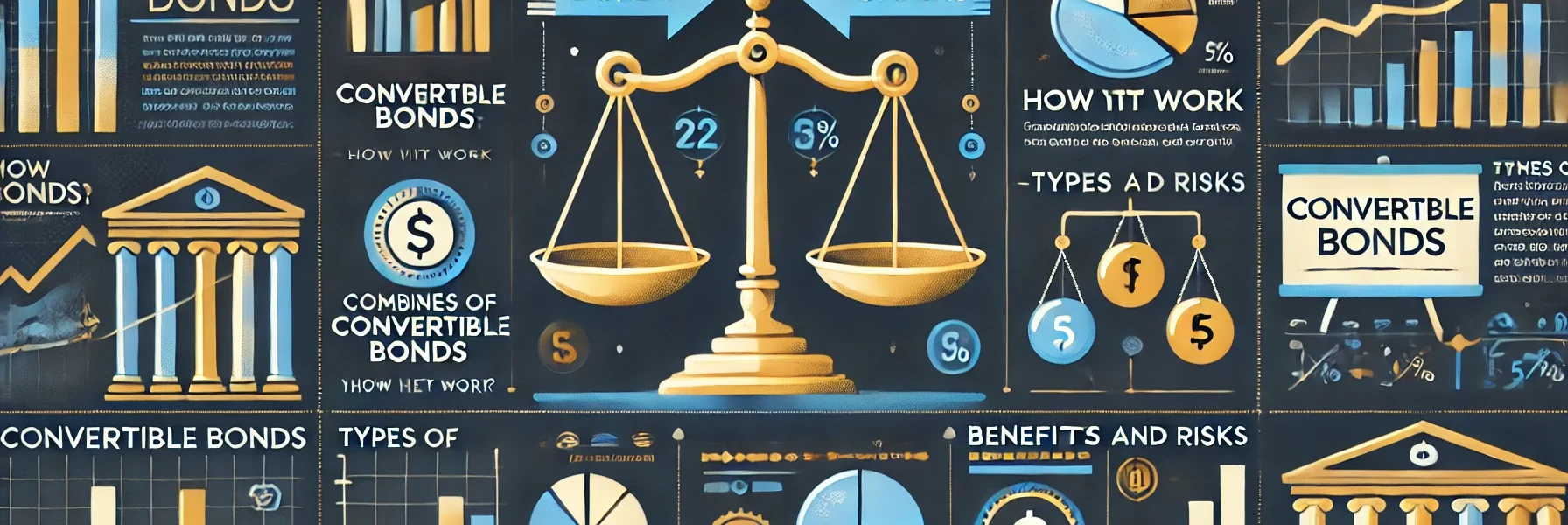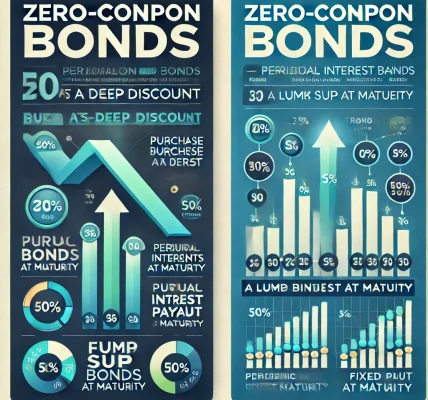Convertible bonds offer a unique investment opportunity by blending the features of traditional bonds with the potential upside of stocks. They are a favored choice for investors seeking both income stability and capital appreciation. This guide will provide a comprehensive understanding of convertible bonds, how they work, their benefits and risks, and whether they should be part of your investment portfolio.
What Are Convertible Bonds?
A convertible bond is a type of corporate bond that gives the holder the option to convert the bond into a predetermined number of the issuing company’s shares. This hybrid financial instrument provides fixed interest payments like regular bonds while allowing investors to benefit from a potential increase in the company’s stock price.
Companies issue convertible bonds to attract investors while preserving cash flow. They are particularly popular among growth-oriented firms that may prefer not to pay high-interest rates.
Key Features of Convertible Bonds
- Conversion Ratio: The number of shares you receive upon converting a bond.
- Conversion Price: The price at which the bond converts to equity.
- Coupon Rate: The fixed interest paid to bondholders.
- Maturity Date: When the bond must be repaid if not converted.
- Call Provision: The issuer’s right to redeem the bond before maturity.
How Do Convertible Bonds Work?
When you purchase a convertible bond, you earn interest (coupon payments) like a traditional bond. However, you also hold the option to convert the bond into shares if the company’s stock price rises above a specific threshold.
Example:
- Bond face value: $1,000
- Conversion ratio: 20 shares
- Conversion price: $50/share If the stock price rises to $60, you can convert your bond into 20 shares valued at $1,200, realizing a profit.
Types of Convertible Bonds
- Vanilla Convertible Bonds: Standard bonds with a fixed conversion ratio and maturity date.
- Mandatory Convertible Bonds: Require conversion into equity at maturity.
- Reverse Convertible Bonds: Offer higher coupon payments but allow the issuer to convert them to equity.
- Contingent Convertible Bonds (CoCos): Convert based on specific financial triggers (e.g., capital thresholds).
Benefits of Investing in Convertible Bonds
- Dual Benefits: Combines fixed income with equity upside potential.
- Downside Protection: If the stock price falls, you still receive interest and principal repayment.
- Diversification: Offers a balanced risk-return profile between equity and fixed-income assets.
- Lower Interest Rates: Issuers typically offer lower coupon rates due to the conversion feature.
Example of Profit Potential
If you invest $10,000 in convertible bonds, earning 4% annual interest with a conversion ratio of 50 shares per bond, you secure income while profiting if the stock price surges beyond the conversion price.
Risks Associated with Convertible Bonds
- Equity Risk: If the company’s stock underperforms, conversion loses value.
- Interest Rate Risk: Rising rates can reduce bond prices.
- Credit Risk: Issuer default can lead to loss of principal.
- Dilution: Conversions increase the number of outstanding shares, reducing share value.
Convertible Bonds vs. Traditional Bonds vs. Stocks
| Feature | Convertible Bonds | Traditional Bonds | Stocks |
|---|---|---|---|
| Income Stability | Moderate (Fixed Coupon) | High (Fixed Coupon) | Low (Variable Dividends) |
| Capital Appreciation | Potential (Via Conversion) | None | High (Market Dependent) |
| Risk Level | Moderate | Low | High |
| Liquidity | Lower than stocks | High | High |
| Convertible Option | Yes | No | Not Applicable |
When Should You Invest in Convertible Bonds?
Convertible bonds are ideal for investors who:
- Desire Regular Income: Want predictable interest payments.
- Seek Equity Upside: Expect the company’s stock to rise.
- Prefer Risk Mitigation: Appreciate the safety net of bond repayment.
- Diversify Portfolios: Want to balance fixed-income and equity exposure.
How to Invest in Convertible Bonds
- Direct Purchase: Buy convertible bonds through brokers or bond markets.
- Convertible Bond Funds: Invest via mutual funds or exchange-traded funds (ETFs).
- Company Offerings: Participate in corporate convertible bond issuances.
Factors to Consider Before Investing
- Conversion Ratio & Price: Evaluate the terms for equity conversion.
- Issuer Creditworthiness: Assess the company’s financial stability.
- Market Conditions: Consider interest rate trends and stock market performance.
- Liquidity: Ensure you can exit investments if needed.
Tax Implications of Convertible Bonds
Interest from convertible bonds is taxable as regular income. If converted to shares, capital gains tax applies upon selling the stock. Consult a tax advisor for personalized guidance.
Conclusion
Convertible bonds are a versatile investment option offering the best of both worlds: the security of bonds and the growth potential of stocks. They provide a compelling choice for those seeking income with the possibility of enhanced returns.
However, like all investments, they come with risks. Understanding their structure, benefits, and potential drawbacks is crucial to making informed decisions. By carefully analyzing market conditions and your financial goals, you can determine if convertible bonds should play a role in your diversified investment strategy.




